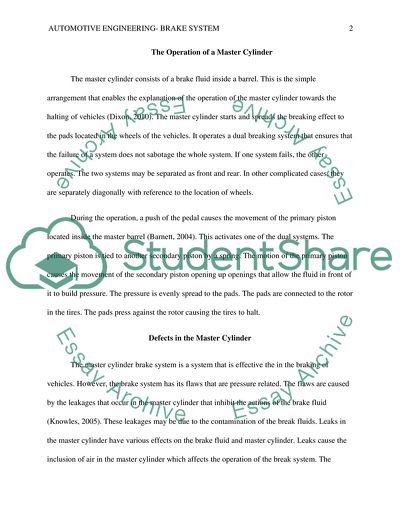Cite this document
(Automotive Engineering-Brake System Report Example | Topics and Well Written Essays - 1750 words, n.d.)
Automotive Engineering-Brake System Report Example | Topics and Well Written Essays - 1750 words. https://studentshare.org/engineering-and-construction/1832386-automotive-engineering-brake-system
Automotive Engineering-Brake System Report Example | Topics and Well Written Essays - 1750 words. https://studentshare.org/engineering-and-construction/1832386-automotive-engineering-brake-system
(Automotive Engineering-Brake System Report Example | Topics and Well Written Essays - 1750 Words)
Automotive Engineering-Brake System Report Example | Topics and Well Written Essays - 1750 Words. https://studentshare.org/engineering-and-construction/1832386-automotive-engineering-brake-system.
Automotive Engineering-Brake System Report Example | Topics and Well Written Essays - 1750 Words. https://studentshare.org/engineering-and-construction/1832386-automotive-engineering-brake-system.
“Automotive Engineering-Brake System Report Example | Topics and Well Written Essays - 1750 Words”. https://studentshare.org/engineering-and-construction/1832386-automotive-engineering-brake-system.


